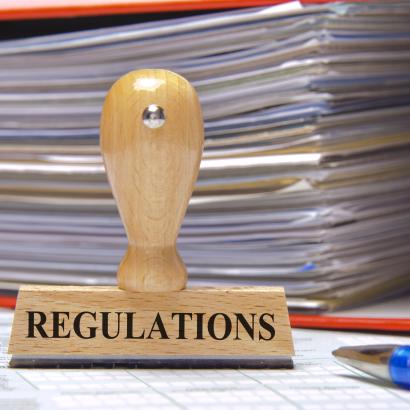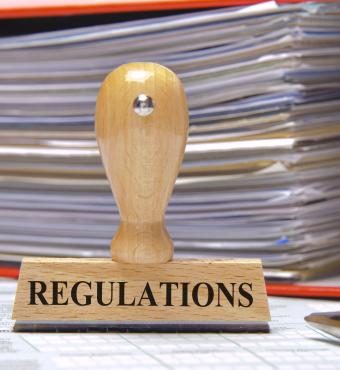- Economics
- US Labor Market
- Law & Policy
- Regulation & Property Rights
- Politics, Institutions, and Public Opinion
- The Presidency
One of the success stories of the Trump administration was that it slowed the speed of regulation and even reversed a number of regulations. I noted in “Trump’s Deregulatory Successes” (Defining Ideas, July 7, 2019) President Trump’s Council of Economic Advisers’ conclusion that if the administration’s reforms, both those that slowed new regulation and those that deregulated, were allowed to take their course, the real income of US households would have grown an average of $3,100 over five to ten years. That was due to the regulatory review process, which put the Office of Management and Budget in charge of requiring federal agencies to do cost/benefit analyses and in a position to challenge regulations that had a major effect on the economy and that might impose costs greater than benefits. Trump added one major change that improved the process.
President Reagan began regulatory reform with Executive Order 12291, titled simply “Federal Regulation”; President Clinton watered it down with EO 12866; and President Trump beefed it up with EO 13771 (“Reducing Regulation and Controlling Regulatory Costs”) and EO 13777 (“Enforcing the Regulatory Reform Agenda.”) The executive orders required a cost/benefit analysis to assure that the costs of major regulations would be compared with their benefits. But on his first day in office, President Biden revoked those executive orders with his own memorandum titled “Modernizing Regulatory Review.” If you read the memorandum carefully, you’ll see that the word “modernizing” is inapt. Indeed, the memorandum would more accurately be labeled “Replacing Cost/Benefit Analysis with Rock, Paper, Scissors.”
Possibly because the memorandum came in the midst of a flurry of executive orders, it has not received much publicity. But it represents a striking move away from the cost/benefit approach that economists in both Republican and Democratic administrations have used to evaluate federal regulations.
“Net Benefits” No Longer Matter
Here’s some quick history of the use of cost/benefit analysis in regulatory review. As noted, President Reagan started the process with EO 12291. Reagan issued the order on February 17, 1981, only twenty-eight days after becoming president. One of the key sentences was Sec. 2 (b): “Regulatory action shall not be undertaken unless the potential benefits to society for the regulation outweigh the potential costs to society.” What if the benefits of a regulation exceeded the costs but a different regulation would have achieved the same benefits but at a lower cost? The Reagan EO had that covered with Sec. 2 (c): “Regulatory objectives shall be chosen to maximize the net benefits to society.” If regulation A costs $1.5 billion and creates benefits of $2.2 billion but alternative regulation B has the same $2.2 billion benefit but a cost of only $1.4 billion, and if those are the only two alternatives, then regulation B maximizes the net benefits to society. The agency within the Reagan administration that enforced this order was the Office of Information and Regulatory Affairs (OIRA).
On September 30, 1993, during his first year in office, President Bill Clinton revoked EO 12291, replacing it with his own EO 12866. Clinton kept OIRA. He also kept cost/benefit analysis as an important criterion for regulation, but softened it slightly, requiring not that the benefits outweigh the costs but, instead, requiring that they “justify” the costs.
Whether under Reagan or Clinton, there were two major problems with regulatory review by OIRA. First, it couldn’t keep up with the thousands of regulations proposed and implemented by various government agencies. Second, the federal agencies often did their cost/benefit analyses badly. As University of Chicago economist Casey Mulligan argues in his book You’re Hired: Untold Successes and Failures of a Populist President, the federal agencies’ employees’ analyses “overlook most of the costs of Federal regulations, with the exception of the amount of time it takes for households and businesses to read the regulation that upends their lives.” Mulligan was in a position to know. From 2018 to 2019, he was the chief economist with President Trump’s Council of Economic Advisers and regulatory reform was one of his main responsibilities.
Was there a way to rein in the federal agencies more than Ronald Reagan had done? Yes, and President Trump did it with Executive Order 13771. That order gave each federal executive agency a “regulatory budget.” Although the most talked-about provision of that EO was the requirement that an agency issue two deregulatory measures for every new regulation, the arguably more important provision was that the dollar cost of each agency’s new regulations could not exceed zero. One obvious objection to a regulatory budget with a zero-cost cap is that it would preclude an agency from issuing a regulation that has small costs and huge benefits. But that objection ignores the fact that each agency has a myriad of regulations, many of which have costs exceeding benefits. So an agency that wants a new regulation need only find enough old regulations with costs that exceed the cost of the new one. Ideally, these old regulations will also be ones whose costs exceed their benefits.
In his book You’re Hired, Mulligan actually gives examples of “negative-cost deregulations” that the Trump administration implemented in 2018 and 2019.
Now with President Biden’s memorandum and the accompanying Executive Order 13992, President Biden has revoked the Trump executive orders. What has he replaced them with? A set of criteria than can be used to justify many regulations that would fail a cost/benefit test. Although the memorandum refers to costs once, there is zero mention of cost/benefit analysis. It’s gone.
Here’s one key part of the memorandum:
These recommendations [by the Office of Management and Budget] should provide concrete suggestions on how the regulatory review process can promote public health and safety, economic growth, social welfare, racial justice, environmental stewardship, human dignity, equity, and the interests of future generations. The recommendations should also include proposals that would ensure that regulatory review serves as a tool to affirmatively promote regulations that advance these values.
All those goals sound good, although whether they are good depends heavily on what the government decision makers take those terms to mean. “Racial justice,” for example, could mean that the government treats people of different races unequally, trying to assure equal outcomes rather than colorblind treatment.
But even if that weren’t a problem, there are two other major problems. First, notice that the OMB is being put in a position not so much to screen regulations as to propose them. Does this mean the agencies will quit proposing regulations and passively await direction from the OMB? No way. Indeed, the memorandum reads as if President Biden is proposing that OMB be a cheerleader for new regulation. He states that he wants OIRA to “play a more proactive role in partnering with agencies to explore, promote, and undertake regulatory initiatives that are likely to yield significant benefits.” Rah, rah, sis boom bah.
The second major problem is one that anyone with much experience dealing with bureaucracy will probably notice: with so many possible criteria, regulators will have running room to implement regulations they like because those regulations pass some criteria even while they fail others. The regulators might, for example, choose a regulation that promotes public health and safety but at the expense of economic growth. Without cost/benefit analysis as a guide, how will they trade off between these two criteria? Any way they like.
Moreover, one other part of the memorandum calls on OMB to assure that analysis of regulations “fully accounts for regulatory benefits that are difficult or impossible to quantify.” Such analysis should account for such benefits, but the key is, how? The odds are that simply such asserting such benefits will often be used to justify regulations that fail on other grounds. And what are the odds that one unquantifiable cost, the loss of freedom, will be given any weight in the process? I would bet 50 to 1 against that.
Burdens of Regulation
I would have thought that President Biden’s repeal of cost/benefit analysis would upset Harvard Law School professor Cass Sunstein, head of OIRA under President Obama from 2009 to 2012, and a strong advocate of cost/benefit analysis. I was wrong. On January 21, Sunstein tweeted that “Modernizing Regulatory Review” is a “superb, pitch-perfect memorandum.” Unfortunately, Sunstein didn’t say why.
One brief part of the Biden memorandum gives a little hope. It’s that the OMB should make recommendations that
propose procedures that take into account the distributional consequences of regulations, including as part of any quantitative or qualitative analysis of the costs and benefits of regulations, to ensure that regulatory initiatives appropriately benefit and do not inappropriately burden disadvantaged, vulnerable, or marginalized communities.
Those who study regulation have long understood that regulations typically cost high-income people more than they cost low-income people. If regulation raises the cost of a good by, say, $10 per unit, and if, as is typical, high-income people buy more units, then high-income people bear a higher cost. So why does the focus on costs for more vulnerable communities give me hope? Because for many goods, the amount that low-income people spend on those goods, though lower in absolute terms, is often much higher as a percent of their income. High-income people like House of Representatives Speaker Nancy Pelosi, for example, has two very expensive refrigerators. Low-income people typically have one fridge. So an energy regulation that raises the cost of all refrigerators by, say, $200 will cost the lower-income family a much higher percent of its income than it costs Representative Pelosi as a percent of her income.
In a 1999 study published in the National Tax Journal, economists Margaret Walls and Jean Hanson found something similar with a hypothetical fee on hydrocarbon emissions. People in the bottom decile (bottom 10 percent) of the income distribution would have paid 2.65 percent of their income on the fee, while the fee would have cost people in the top decile only 0.35 percent of their income.
I suspect that the majority of regulations have a somewhat similar incidence. For instance, President Trump’s tariffs likely cost lower-income consumers a higher percent of their income than they cost higher-income consumers.
Let’s hope that concerns about making lower-income people worse off will loom large in discussions of future regulation by the Biden administration.
















